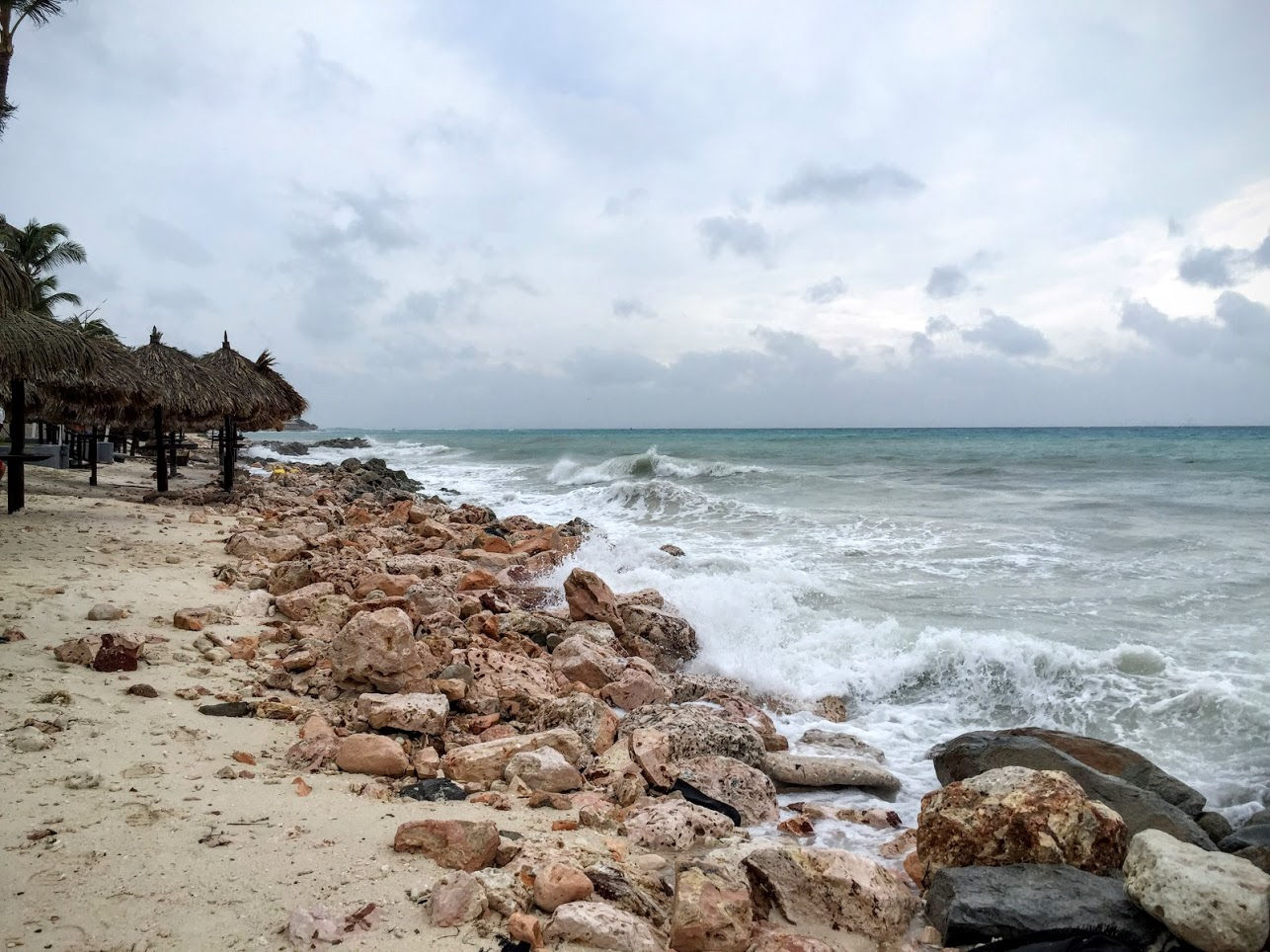Impact of Hurricanes on Aruba: Aruba Hurricane

Aruba hurricane – Aruba, a Caribbean island nation, is located outside the hurricane belt and is rarely affected by these storms. However, the island is not immune to the potential impact of hurricanes, which can cause significant damage to infrastructure, tourism, and the environment.
Frequency and Severity of Hurricanes
While Aruba is not directly in the path of major hurricanes, it can be impacted by the outer bands of these storms, which can bring heavy rainfall, strong winds, and storm surges. The island is most vulnerable to hurricanes during the Atlantic hurricane season, which runs from June 1st to November 30th.
The recent hurricane that swept through Aruba left a trail of destruction in its wake. As the storm intensified, its path shifted slightly, taking it closer to the coast than initially predicted. To track the evolving trajectory of the hurricane, meteorologists and residents alike closely monitored the path of hurricane beryl.
The storm’s unpredictable nature kept everyone on edge, as its path had the potential to significantly impact the severity of the damage it inflicted on Aruba.
Potential Damage Caused by Hurricanes
Hurricanes can cause widespread damage to Aruba’s infrastructure, including roads, bridges, buildings, and utilities. The island’s tourism industry, which is a major contributor to the economy, can also be severely impacted by hurricanes, as storms can damage or destroy hotels, restaurants, and other tourist attractions.
The Aruba hurricane, a formidable force of nature, has left an unforgettable mark on the island. As we navigate its aftermath, it’s crucial to stay informed about potential threats. For those tracking the storm’s path, beryl hurricane track provides valuable insights into its trajectory.
By monitoring this resource, we can stay prepared and take necessary precautions to safeguard our communities from the impact of future hurricanes.
Notable Hurricanes that have Impacted Aruba
Aruba has been impacted by several notable hurricanes in recent years, including Hurricane Felix in 2007 and Hurricane Irma in 2017. Hurricane Felix made landfall in Nicaragua as a Category 5 hurricane and passed south of Aruba as a Category 2 hurricane, causing widespread damage to the island’s infrastructure and tourism industry.
Hurricane Irma made landfall in Barbuda as a Category 5 hurricane and passed north of Aruba as a Category 4 hurricane. The storm caused significant damage to the island’s infrastructure and tourism industry, and also resulted in the deaths of two people.
Hurricane Preparedness and Mitigation in Aruba

Aruba’s proactive approach to hurricane preparedness and mitigation has played a crucial role in safeguarding its communities and infrastructure. The government and local organizations have implemented comprehensive measures to enhance resilience, including early warning systems, evacuation plans, and disaster response protocols.
Early Warning Systems
Aruba’s early warning system is designed to provide timely alerts and forecasts to the public. The system utilizes a combination of weather monitoring technologies, including radar, satellites, and weather stations, to track and predict the movement of hurricanes.
Evacuation Plans
Evacuation plans are essential for ensuring the safety of residents in the event of an impending hurricane. Aruba has established designated evacuation zones and routes, which are communicated to the public through various channels, including radio, television, and social media.
Disaster Response Protocols
Aruba has developed comprehensive disaster response protocols that Artikel the roles and responsibilities of government agencies, emergency services, and community organizations. These protocols ensure a coordinated and effective response to hurricanes, including search and rescue operations, damage assessment, and the provision of essential services.
Climate Change and Hurricanes in Aruba

Climate change poses significant implications for hurricane activity in Aruba. Scientific evidence indicates a strong link between rising global temperatures and increased hurricane intensity and frequency.
Warmer Ocean Temperatures
As the ocean absorbs more heat due to climate change, sea surface temperatures rise. Warmer ocean waters provide more energy for hurricanes to form and intensify. Hurricanes feed on the warm water, allowing them to maintain their strength and longevity.
Increased Atmospheric Moisture, Aruba hurricane
Climate change leads to higher levels of atmospheric moisture. Warmer air holds more moisture, which is then released during hurricanes. This increased moisture content results in heavier rainfall, leading to more severe flooding and storm surge during hurricanes.
Changes in Wind Patterns
Climate change is altering global wind patterns, affecting the formation and movement of hurricanes. Changes in wind direction and speed can influence hurricane tracks and the areas they impact.
Recommendations for Adaptation and Mitigation
- Invest in coastal infrastructure to withstand stronger hurricanes and storm surges.
- Develop early warning systems and evacuation plans to ensure timely responses.
- Implement land-use planning measures to minimize development in vulnerable coastal areas.
- Promote sustainable practices to reduce greenhouse gas emissions and mitigate climate change.